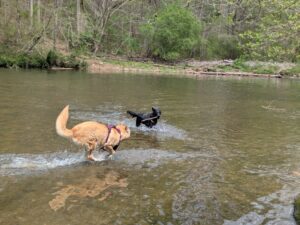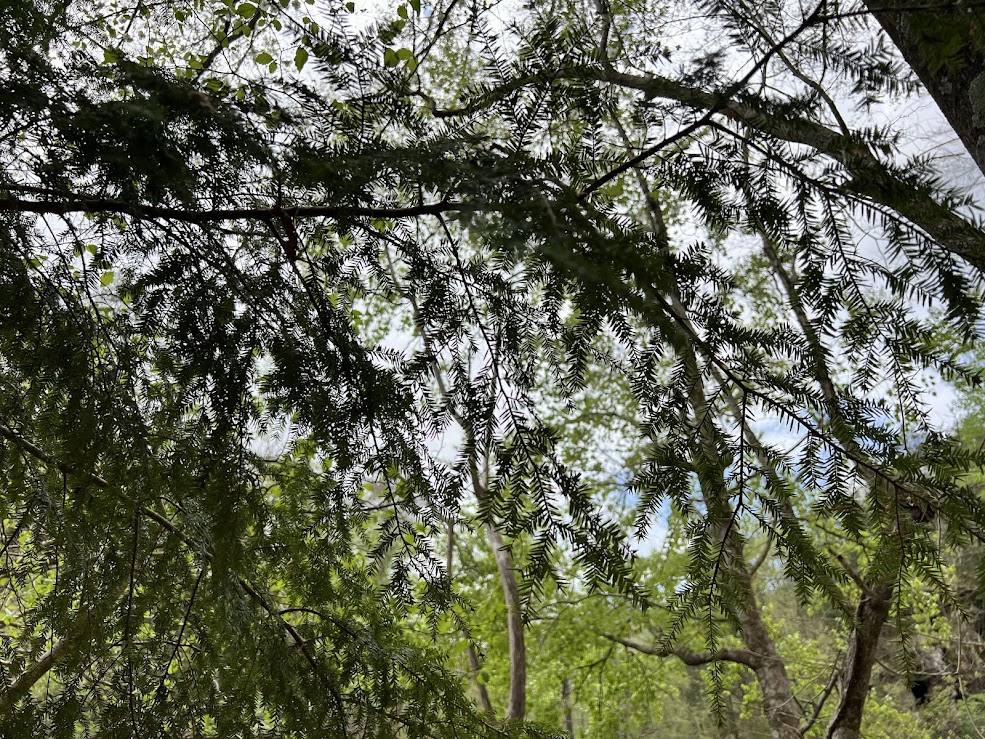
Written by Savannah Thompson
On a warm, breezy day in early April, FLT’s Land Stewardship Director Sam McCoy and Outreach and Communications Coordinator Savannah Thompson spent the day monitoring a downstream conservation property along Village Creek. Their dogs, Jasper and Kaya, tagged along for a dip in the water.
Known as Village Creek CU5, this 415-acre tract in western Jefferson County features a beautiful mix of hardwood and pine-hardwood forest. Remarkably, it is home to the southernmost documented population of native eastern hemlocks. The property also hosts a diverse array of native wildflowers scattered throughout its varied landscape.
We began by monitoring the southernmost section of the property, starting beneath a bridge that is popular with anglers. The trail was heavily littered, both from illegal dumping and as a byproduct of its location downstream. This portion is host to mixed hardwood: white and red oak, American beech, water oak, and the occasional loblolly pine, which became more frequent as we headed upstream. We stopped to let the pups cool down in the water and admired the wildflowers (fringed bluestar, star chickweed, and rue-anemone) as well as a passing great blue heron, somehow graceful in its lankiness. We crossed a grossly eroded tributary, but our attention was then transfixed by fields of buckeye on either side of us as we neared the property boundary.
We traveled to another part of the property, just north of the previous location, where dense loblolly pine stands give way to hardwoods as we moved closer to the creek. Here, beeches, bigleaf magnolias, and eastern hemlocks dominate the landscape. Invasive Chinese privet is present, but only here and there. This section had even more wildflowers than the last: native azalea, fire pink, dwarf crested iris, and little brown jug, to name a few.
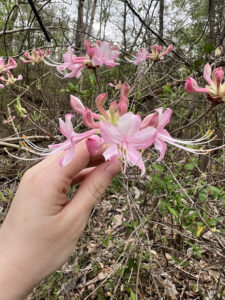
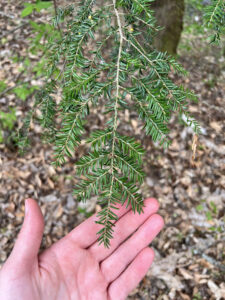
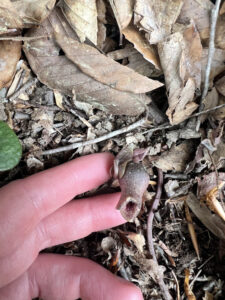
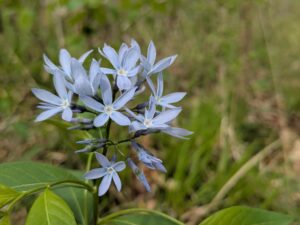
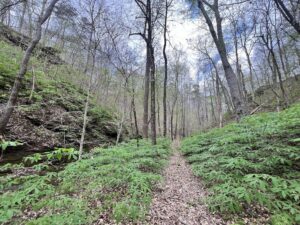
One task unique to this monitoring trip is to check the hemlocks for signs of the hemlock wooly adelgid, a nonnative insect that attacks the trees. Luckily, there was no sign of the cotton-like egg sacs that easily betray the pest’s presence.
When we once again reached the property boundaries, we made our way back through the woods, tired but grateful for the chance to spend time on such a special piece of protected land. Monitoring visits like this one are vital to our work as a land trust—not only to assess the health of native species and habitats, but also to renew our connection with the landscapes we work to protect. Village Creek CU5 is full of surprises, and it’s always a treat to see it up close. With the dogs happily worn out and no sign of hemlock woolly adelgid, we counted the day as a win.
